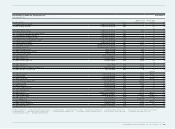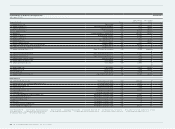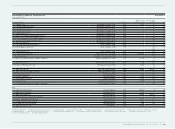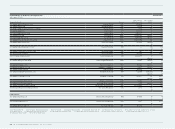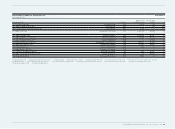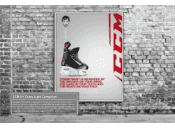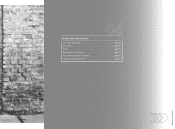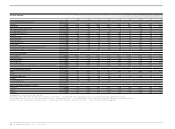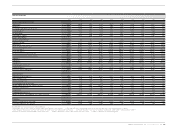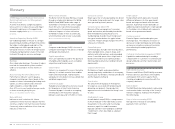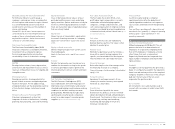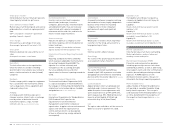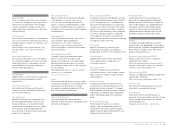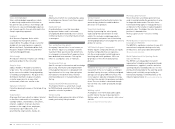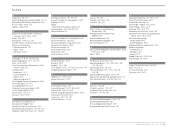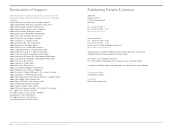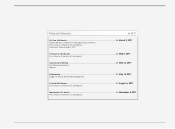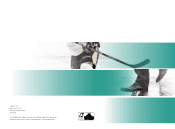Reebok 2010 Annual Report Download - page 241
Download and view the complete annual report
Please find page 241 of the 2010 Reebok annual report below. You can navigate through the pages in the report by either clicking on the pages listed below, or by using the keyword search tool below to find specific information within the annual report.
Additional Information Glossary 237
Diluted Earnings Per Share (Diluted EPS)
Performance indicator used to gauge a
company’s earnings per share, assuming that
all stock options and conversion rights related
to a convertible bond are exercised, which
would result in an increase of the number of
shares outstanding.
Diluted EPS = (net income + interest expense on
convertible bonds net of tax) / (weighted average
number of shares outstanding during the year +
weighted share options + shares from assumed
conversion of convertible bonds).
Dow Jones Sustainability Index
The Dow Jones Sustainability Index (DJSI)
measures companies’ sustainability initiatives,
focusing on how a company recognises
the risks and opportunities arising from
sustainability issues in its business strategy.
E
EBITDA
Earnings before interest, taxes, depreciation,
amortisation and impairment losses as well as
reversals of impairment losses for tangible and
intangible assets.
Emerging markets
Developing countries showing potential for
growth in both economic strength and private
wealth in the future. For the adidas Group,
emerging markets are the developing countries
of Asia, Eastern Europe, Latin America and
Africa.
Enterprise Resource Planning (ERP)
A business management system that
integrates all facets of the business, including
planning, manufacturing, sales and marketing.
Equity derivatives
Class of derivatives whose value is at least
partly derived from one or more underlying
equity securities. Options and futures are by far
the most common equity derivatives, however
there are many other types of equity derivatives
that are actively traded.
Equity ratio
Shows the role of shareholders’ equity within
the overall financing structure of a company.
Equity ratio = (shareholders’ equity / total assets)
× 100.
Equity-to-fixed-asset ratio
Defines the percentage of non-current assets
financed by equity.
Equity-to-fixed-asset ratio = equity / non-current
assets.
E-tailer
Retailer that primarily uses the internet as a
medium for consumers to shop for the goods
or services provided. E-tailers optimise the
internet potential to attract, convert and retain
consumers.
F
Fair Factories Clearinghouse
The Fair Factories Clearinghouse (FFC)
was established in 2004 with the purpose of
improving social, environmental and security
standards and helping create humane working
conditions for workers making consumer
goods globally. Membership includes many
sporting and consumer goods companies
as well as a wide range of consumer goods
suppliers see also www.fairfactories.org.
Fair Labor Association (FLA)
The Fair Labor Association (FLA), a non-
profit labour rights organisation, is a multi-
stakeholder initiative bringing together
companies, colleges and universities, and
civil society organisations to improve working
conditions worldwide by promoting adherence
to international and national labour laws see
also www.fairlabor.org.
Fair value
Amount at which assets are traded fairly
between business parties. Fair value is often
identical to market price.
Finance lease
Method of acquiring an asset that involves a
lease with a special leasing company for a
specific, non-terminable initial leasing term.
The investment risk is borne by the lessee.
Financial leverage
Ratio reflecting the role of borrowings within
the financing structure of a company.
Financial leverage = (net borrowings / shareholders’
equity) × 100.
Forward contract
Agreement to exchange amounts of one
currency for another currency at an agreed
fixed rate at a future date.
Franchising
Form of business by which the owner
(franchisor) of a product, service or method
obtains distribution through affiliated dealers
(franchisees). The franchisor offers assistance
in organising, training, merchandising,
marketing and managing in return for a
monetary consideration.
Free cash flow
Cash that is generated by a company’s
operating activities after the deduction of
capital expenditure and other cash expenses
such as taxes and interest from the operating
profit.
Free cash flow = operating profit + depreciation and
amortisation (incl. goodwill) +/– changes in operating
working capital – capital expenditure +/- non-
operating components.
G
German Co-Determination Act
Mitbestimmungsgesetz (MitbestG). This act
governs the form of co-determination of
employees in corporations employing more
than 2,000 employees. It stipulates, among
other things, that such a corporation’s
Supervisory Board must be composed of an
equal number of employee and shareholder
representatives.
Goodwill
Intangible asset that quantifies the price that a
buyer of a company has paid for the reputation,
know-how and market position of the acquired
company. Goodwill is the excess of the amount
paid over the fair value of the net assets
acquired at the purchase date.
Go-to-market
All instruments, tools and channels used to
connect with consumers in order to best fulfil
their needs.


